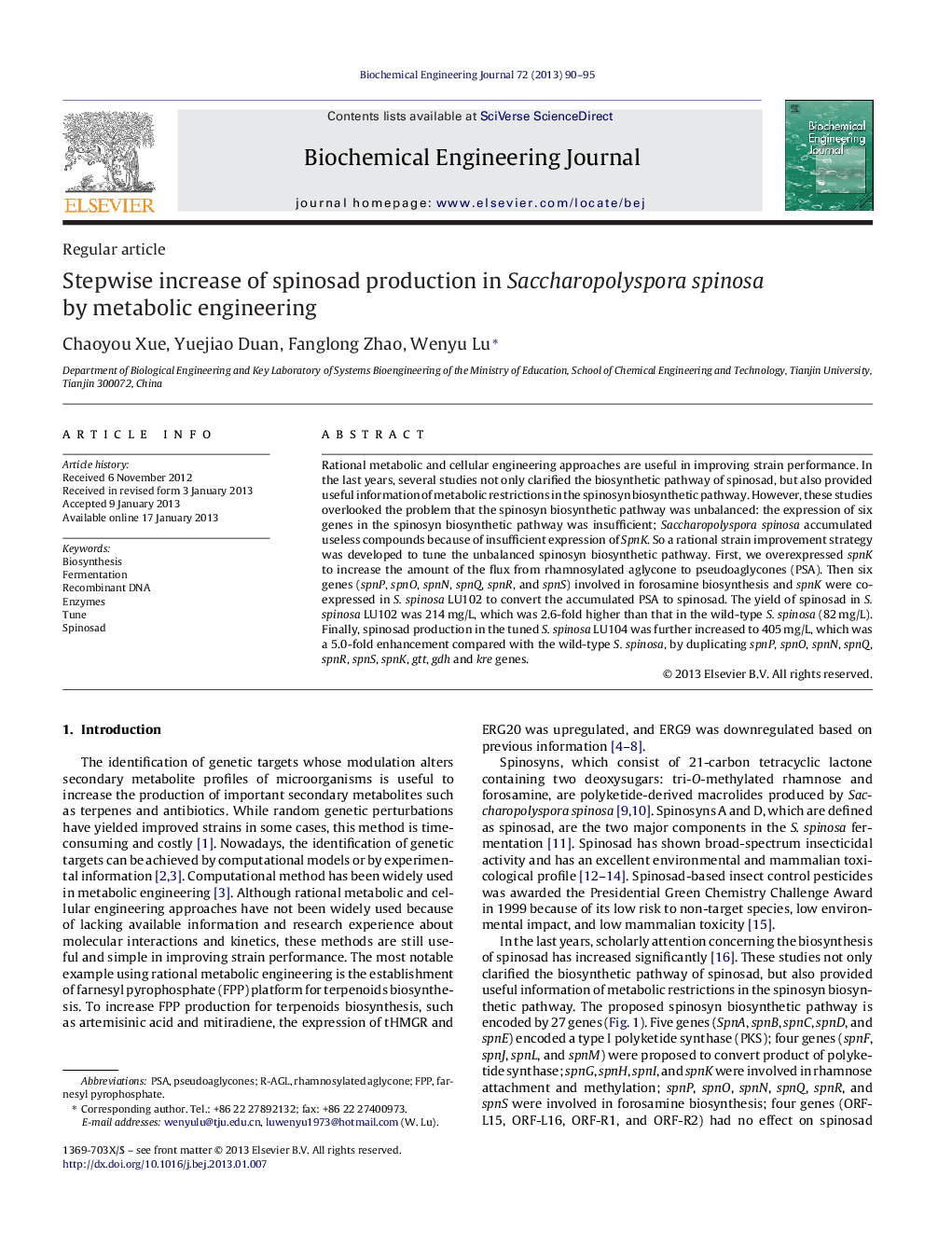| کد مقاله | کد نشریه | سال انتشار | مقاله انگلیسی | نسخه تمام متن |
|---|---|---|---|---|
| 3372 | 166 | 2013 | 6 صفحه PDF | دانلود رایگان |

Rational metabolic and cellular engineering approaches are useful in improving strain performance. In the last years, several studies not only clarified the biosynthetic pathway of spinosad, but also provided useful information of metabolic restrictions in the spinosyn biosynthetic pathway. However, these studies overlooked the problem that the spinosyn biosynthetic pathway was unbalanced: the expression of six genes in the spinosyn biosynthetic pathway was insufficient; Saccharopolyspora spinosa accumulated useless compounds because of insufficient expression of SpnK. So a rational strain improvement strategy was developed to tune the unbalanced spinosyn biosynthetic pathway. First, we overexpressed spnK to increase the amount of the flux from rhamnosylated aglycone to pseudoaglycones (PSA). Then six genes (spnP, spnO, spnN, spnQ, spnR, and spnS) involved in forosamine biosynthesis and spnK were co-expressed in S. spinosa LU102 to convert the accumulated PSA to spinosad. The yield of spinosad in S. spinosa LU102 was 214 mg/L, which was 2.6-fold higher than that in the wild-type S. spinosa (82 mg/L). Finally, spinosad production in the tuned S. spinosa LU104 was further increased to 405 mg/L, which was a 5.0-fold enhancement compared with the wild-type S. spinosa, by duplicating spnP, spnO, spnN, spnQ, spnR, spnS, spnK, gtt, gdh and kre genes.
► Unbalanced biosynthetic pathway of spinosad was stepwise is stepwise tuned.
► The yield of spinosad in the tuned Saccharopolyspora spinosa LU104 reached 405 mg/L.
► We made a 5.0-fold enhancement of spinosad compared with wild-type S. spinosa.
Journal: Biochemical Engineering Journal - Volume 72, 15 March 2013, Pages 90–95